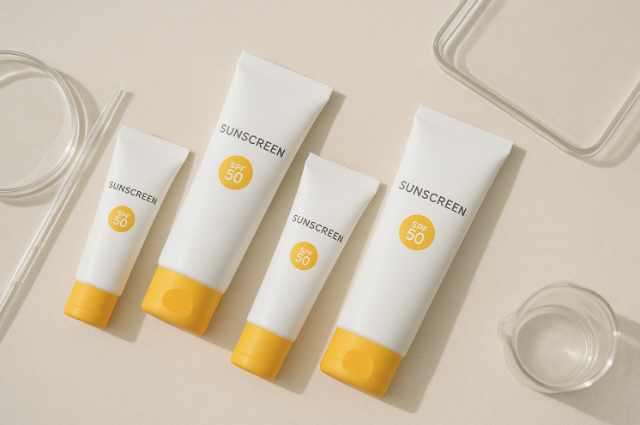
If you’ve logged onto Instagram or just scrolled through reels in the past few weeks, you’ve definitely seen this sunscreen drama take over everyone’s feed. Seriously, it’s been wild. No fancy filters or influencers doing #SPFHaul unboxings, we got real chaos and confusion everywhere. I’m here just trying to make sense of it and share the truth the way we actually talk, no frills.
This whole thing started with Nitin Joshi, yeah, the influencer from Noida who everyone suddenly heard about. The guy actually spent over two lakhs of his own cash, bought the top ten sunscreens you see everywhere in India, and sent them straight to government labs for testing. No big brands backing him, no “sponsored by XYZ Company” tags. Pure curiosity and guts. Respect.
The results? They were brutal. Six out of ten failed big time, didn’t even come close to the SPF numbers printed on their tubes. You’re thinking you’re safe from sunburn, spreading that stuff all over… and the lab says, “nope, not even close.” The internet went bonkers. People who never gave SPF a second thought were suddenly making memes, recording videos, and arguing nonstop. Overnight, sunscreen became the most talked-about thing in the beauty world.
SPF: What It Really Means (And Why It’s So Tricky)
Let’s break it down: SPF (Sun Protection Factor) is just a fancy number telling you how long you can stand in the sun before you burn, compared to no sunscreen at all. So, SPF 30 means you could theoretically handle 30 times more sun exposure before turning tomato red. Sounds genius, right? But here’s what most people miss: how they even figure this number out. Testing sunscreen can be done in two ways. There’s in vitro, all science lab vibes on fake skin and glass plates. Then there’s in vivo, the real MVP, which means actual human volunteers sit under controlled sunlight and get checked.
Nitin got his results from in vitro tests. The labs run them a lot, but it’s not the whole story. Dermatologists warn that actual skin, how you apply, how much, and how often you reapply, all make SPF results totally different for real people. So, yeah, those tests revealed a lot. But they’re not the final word, especially if you’re lazy with the application.
The Winners, The Losers, And The Epic Internet Backlash
Nitin’s report put a bunch of brands on blast. Renee, Dot & Key, WishCare? Didn’t pass. Lotus and Deconstruct, kinda okay, but nothing to brag about. Turns out Minimalist, Derma Co., and Lakme totally killed it. Aqualogica even scored better than expected, which blew everyone’s mind for a hot second.
Then, internet detectives started digging deeper. “Why did these few brands pass, and most flunk?” Some called Nitin’s test biased; others claimed he was in bed with certain parent companies. Suddenly, it wasn’t just about SPF; it became about money, big business, and trust. So yeah, welcome to the full-blown sunscreen conspiracy club.
Why Did This Get So Out of Control?
Honestly, social media is a wild animal; once it picks something up, it spreads faster than summer heat. For a few days, all you see is “Sunscreen is a scam!” and “We’re all doomed!” Influencers who knew nothing started preaching. It got messy. That’s risky, because real sunscreen does matter. Ditching it because one viral video spooked you? That’s how you end up wrinkly, sun-damaged, or worse, risking skin cancer down the line.
Real doctors and skin experts stepped in, posting reels and writing long captions just to calm people down. They all say the same thing: good sunscreen, used right, protects you. Don’t go throwing your tube out before checking the facts.
What Actually Works: Dermatologists’ Picks
If you want legit advice, listen to dermatologists. Forget hype, you need broad-spectrum protection (UVA and UVB). Expensive options like La Roche-Posay Anthelios, Neutrogena UltraSheer, Bioderma Photoderm, and Cetaphil Sun Guard? Those work worldwide, trusted by skin professionals.
If your budget’s tight or you’re sticking to desi brands, Lotus Herbals Safe Sun and Kaya Clinic get plenty of nods from skincare pros across India.
Big PSA: It’s not about buying the best tube and calling it a day. You gotta use enough, a thick layer, not a thin smear, and reapply every two hours, especially if you sweat or swim. Most people use way too little and blame the product, when it’s just them slacking off.
What You Should Really Take Away
Don’t believe every viral rant. Treat this whole sunscreen drama as a wake-up call. Check brands, do some actual research (not just YouTube shorts), ask your dermatologist, and most of all, learn the proper way to use sunscreen. It’s part of your health, not just a beauty trend.\And remember, sunscreen isn’t magic. Hats, shades, and avoiding the sun when it’s super strong do just as much. If this saga taught us anything, it’s that online chaos can mess up good habits. Stay smart, stay skeptical, and protect your skin; you need it for life.
References:
- NDTV — Influencer's Lab Test Claims Top Indian Sunscreen Brands Fail SPF Standards
- Times of India — Indian Sunscreens Face Backlash After Influencer’s SPF Claims Go Viral
- Business Standard — Influencer’s Sunscreen Test Sparks Debate Over SPF Claims
- Skin Cancer Foundation — Skin Health Misinformation: The Dark Side of Social Influencers
- 5. NBC News — Experts Warn Against Sunscreen Misinformation Campaign on Social Media
